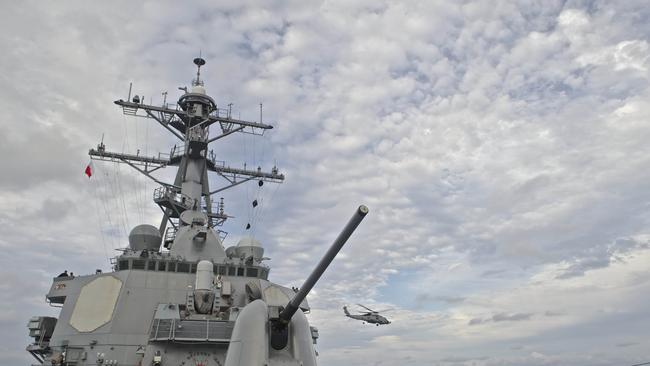
Beijing has been playing an extremely dangerous game in the South China Sea, and a similar game in the East China Sea, for a long time now.
People’s Liberation Army aircraft and navy vessels frequently approach US and Japanese planes and ships at high speed and very close, forcing them to take evasive action.
The frequency of these incidents, which Washington and Tokyo generally don’t publicise, is often taken as an indicator of the stability of the overall relationship at any given moment.
Senior US military figures and diplomats have often complained to their Chinese counterparts about this behaviour.
Beijing’s purpose in these incidents is to attempt to intimidate the Americans and the Japanese.
They generally occur around disputed territories, although not always.
The latest near-incident in the South China Sea recalls the dramatic episode at the beginning of the first administration of US president George W. Bush, in 2001, when a Chinese fighter repeatedly buzzed a US Navy reconnaissance plane and ultimately collided with it.
The Chinese plane was destroyed and its pilot killed, while the US plane, suffering severe damage, had to make an emergency landing on the Chinese island of Hainan.
The Chinese kept the American crew members in their custody for 11 days before allowing them to return to the US.
According to most reports, the incident took place some 110km from Hainan and therefore well into international territory in which the Americans were entitled to fly.
However, it was within Beijing’s economic zone and Beijing asserts a demand that international aircraft seek its permission for any such flights.
Although the Hainan incident created a moment of acute tension between the new Bush administration and the Chinese, it was handled professionally and calmly by both sides and did not lead to further such incidents.
It is encouraging on this occasion that although US Defence Secretary James Mattis has cancelled a trip to Beijing, he has also expressed confidence that the two nations would manage their differences peacefully.
Nonetheless, incidents such as this are inherently extremely unpredictable and dangerous.
The US is the only nation that routinely conducts freedom of navigation exercises in the disputed waters of the South China Sea.
The ruling of the Permanent Court of Arbitration in 2016 established with absolute clarity that Beijing does not have any legal basis for claiming as its sovereign territory the area delineated by its “nine dash line”, which encompasses almost all of the South China Sea.
The US Navy, literally for centuries, has conducted freedom of navigation exercises in different parts of the world.
Beijing has made it clear that it does not recognise the PCOA ruling.
Those who worry about the decline of the international rules-based order have much more to worry about in Beijing’s behaviour than in Washington’s.
Indeed, in many respects the US is giving expression to the PCOA ruling through its freedom of navigation operations.
The kind of dangerous challenge the Chinese destroyer just mounted against the USS Decatur is extreme by any standards, and represents a seemingly clear escalation by Beijing.
This almost certainly reflects Beijing’s extreme testiness with the Trump administration as a result of tariffs that US President Donald Trump has imposed on billions of dollars of Chinese exports to the US.
The thinking in Beijing will be that such actions give it greater leverage in its negotiations with Mr Trump.
However, it is extremely dangerous to challenge the US President to this kind of macho game of chicken.
It is likely that this will be no more than an unfortunate incident.
Nevertheless, both sides should react very calmly — and Beijing should desist from such provocative gestures.





To join the conversation, please log in. Don't have an account? Register
Join the conversation, you are commenting as Logout